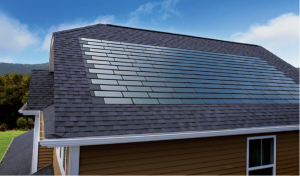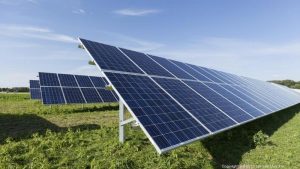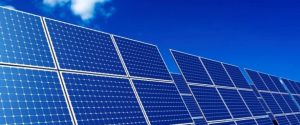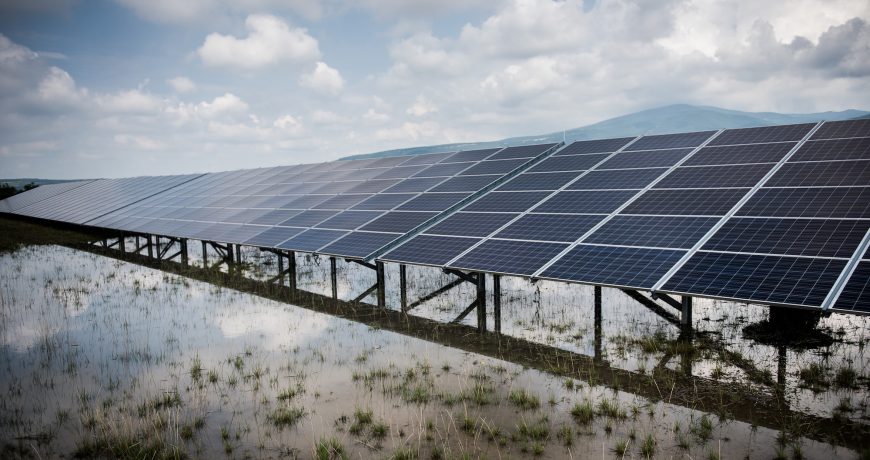The way technology is advancing, it will be hard to recognize solar panels 20 years from now on. The solar industry is constantly trying to improve themselves and figure out better ways to serve us in future. However, if we sneak-peak into the future of solar industry and the scientific research we can get a glimpse of what this industry has to offer us in 2038.
Transparent Solar Panels

Researchers in Michigan State University have proposed the idea of Transparent Solar Panels which could bring a huge change in the solar industry. The team led by Richard Lunt, the Johansen Crosby Endowed Associate Professor of Chemical Engineering and Materials Science at MSU said that, “Highly transparent solar cells represent the wave of the future for new solar applications,” According to them transparent solar panels can provide 40% of the electricity if these panels are installed on some five to seven billion square meters of glass surface.
Compared to 15 per cent efficiency of today’s solar panels, transparent panels is only 5 percent efficient. Theoretically, clear solar panels can be affixed to vehicles, buildings, windows, and even mobile phones. As this technology is still in the phase of infancy, going forward the team will work on improving the capabilities of this panel.
Solar Shingle

Tesla, an American multinational corporation that specializes in electric vehicles, energy storage and solar panel manufacturing announced about Solar Shingles also known as solar tiles. Solar shingles looks exactly like regular tiles but each tile contains a solar cell. When these tiles are linked in series, they can produce energy equivalent to solar panels of same size.
Companies like SolarCity(a Tesla Subsidy) and Dow have come together into entering the solar shingle market in order to make people aware of it who are worried about installing bulky and unattractive solar panels on their roofs.
The materials that are used in making the solar panels will also change. The manufacturers of laptops, electric vehicles, cordless power tools and cell phones all use the same earth elements that solar panel makers do. Scientists have urged these companies to find replacements and use better metal recycling & recovery systems. Companies like Apple have responded proactively in this matter. They were able to recover a ton of gold from discarded iPhones, iPads and several other Apple products collected in 2015.
Solar Power will play major role

As the world is getting aware of the drastic climate change, solar power is expected to become more demanding to mitigate this change. By 2050, solar energy is accounted to produce 16% of the electricity production globally against the present 1%. It is also suggested that while the use of rooftop solar will increase in number the utility-scale too will reach the multi-terawatt level by mid-century.
Developing countries will start using solar energy in the form of microgrids. These microgrids are decentralized setup for electricity production in small areas like villages or a group of neighborhoods. Areas like Africa, Southeast Asia and other developing regions can benefit from these microgrids where electricity is a huge problem. It is either very costly or situated far away from the main grid. Microgrids can come as a rescue for the residents living here.
Solar technology will be cheaper and better

With the advancing technology, scientists are trying hard to bring cheaper and efficient solar cells. Many experts are even trying to prove that “pervoskite” solar cells will be the next generation solar cells which will have the potential to be as efficient as traditional silicon cells. The word “perovskite” is a type of material that has a special type of crystal structure-calcium titanium oxide and the other materials can be referred as perovskites.
Manufacturing a solar cell using perovskite is easier than manufacturing one with crystalline silicon. While perovskite is still not ready for commercial use but it has anticipated researchers to find possible ways to explore different applications.
The average efficiency rate of a panel hovers around 15 percent, as per the analyst by 2027, most premium solar panels will be at least 25 percent efficient and if it continues into the following decade, the average high-end panel in 2038 would be over 30 percent efficient.
Analysts are predicting that the prices will drop by 27 percent in between 2017 and 2022 globally. Technologies like batteries will also see a downward trend in price. The batteries which cost about $ 273 per kilowatt –hour, it will cost around $70 by 2040. The decrease in price will not only improve the solar industry but it will enhance and encourage the more use of solar lights.
China to continue as a leader
China has large reserves of rare elements like tellurium and indium that are important basics in the production of solar panels. China is also investing heavily in research & development of solar technology and to continue being in top it is planning to look for new reserves in Africa or elsewhere before 2038.
By 2040, China is expecting to contribute 28 percent of all investments in power generation and not only producing energy since Chinese solar panels are cheaper and high in quality, some of the Chinese solar companies are even able to attract a number of foreign companies for investment.
To sum up this article, we can say that solar industry is going to bring a revolutionary change over the next 20 years predicting a better and brighter future for our future generations.

